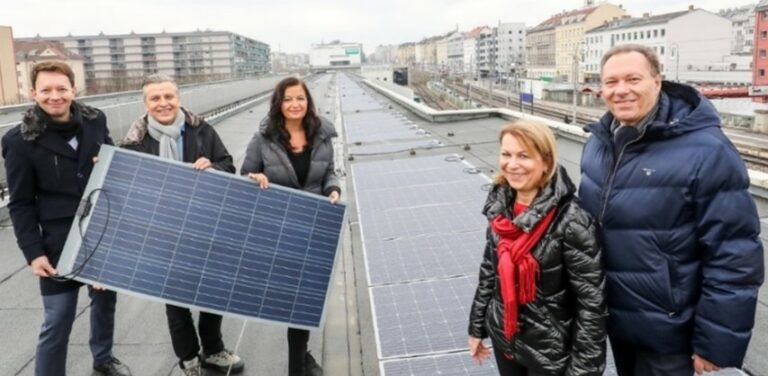First full year results of the Vienna PV system
A new, foil-based PV system is being tested on the roof of a Vienna metro station by Wiener Linien. This kind of PV system is much lighter than the conventional one because of the lack of a metal frame. The green energy is directly fed into the stations’ energy grid: the system is used to power metro station auxiliaries. The test started on 14th January 2020 and is continuously monitored.

Results
The PV system with a nominal power of 60 kWp generated 58.377 kWh green energy in the first full year of operation; that is 5.7% of the station’s yearly energy consumption. The table below summarises key data about the PV installation, such as the amount of the CO2-savings.

The generated green energy is up to 10% of the metro-station’s monthly energy demand in Spring and Summer months. On the strongest days, the PV system can supply up to 50% of the station’s energy need.
Outlook
Regarding the feasibility, the Wiener Linien pilot project covers all obstacles (e.g. weight, electrical earthing) other potential locations of mobility providers equally struggle with. Due to the excellent experience at this metro station, Wiener Linien is currently checking other metro stations for the possibility of installing a PV system. The goal is to install a PV system on as many stations as possible, to use as much green energy as possible for powering the auxiliaries of the stations. But with a view to the financial aspect, Wiener Linien will use conventional PV-Systems where it is possible, as its costs are lower.
Source: Interreg EfficienCE
Author of the article: Wiener Linien
Cover photo: Wiener Linien







